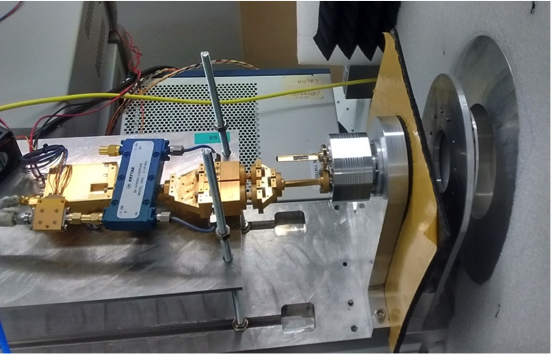ALMA Programme News
Band 1 Critical Design Review
On 19 and 20 January 2016, the CDR (Critical Design Review) for ALMA Band 1 was held in Taipei (Taiwan). Band 1 is one of the missing bands for ALMA, the other missing bands are Band 2, and Band 5 which is currently being installed at the array. NAOJ and ASIAA have been developing a Band 1 prototype cartridge and called for the CDR with an international review panel, including participation of experts from ESO, SRON and Observatoire de Paris-Meudon, to assess the readiness for series production. The panel was impressed by the achieved progress and indicated areas which would need some attention before embarking on a full scale production.
Natural Gas Pipeline for ALMA
ESO, on behalf of the ALMA partnership, is pursuing the construction of a natural gas pipeline from San Pedro de Atacama to the power generators at the OSF. Currently, the fuel for the ALMA power generators is brought to the OSF by trucks. A pipeline is a safer means of fuel transportation, and natural gas is a relatively clean and cost effective fuel for power generation.
Before being allowed and able to build the 24 km of pipeline, the detailed engineering and an Environmental Impact Study according to Chilean regulations need to be carried out. Both are currently underway.
European Development Projects
ALMA has a very active development programme in the partner regions and at JAO. On the European side, ESO funds the Band 5 full production and integration at OSF, with contributions from NRAO and NAOJ. Receiver cartridge construction is ongoing at GARD (Sweden) and NOVA (Netherlands), and the integration into cryostats and antennas is carried out in Chile. By now, a total of 14 Band 5 receivers have been installed on ALMA antennas and passed the verification process on sky. It is anticipated that Band can be offered for science in Cycle 5.
ESO also co-funded the OSF to Calama Fibre-Optic Connection project, managed by an ESO staff member on secondment to JAO. The connection was technically complete by end of 2014. The system is now used formally in testing mode, but at 100% functionality. Regulatory topics need to be settled by the contractor before routine start of use.
ALMA Upgrade Studies
Following the announcement on the previous Newsletter, we will provide regular updates and information on various developments under study in Europe. This issue we focus on the status of the development of ALMA Band 2-3.
We also would like to draw the attention of the readers to the new Call for ALMA Upgrade Studies that ESO expects to release in May 2016, and to the Submm Instrumentation Development Workshop that will take place in Gothenburg on May 25–27, 2016.
ALMA Band 2/3 Development
The ultimate goal of this development study is the design and production of a wide band receiver cartridge covering both band 2 and 3. This requires, among others, development of suitable optics components and active (amplifier) devices. In Europe, work continues on a cartridge prototype, in a collaborative effort involving ESO, INAF (iALMA project), STFC (RAL and University of Manchester) and University of Chile with contributions from NAOJ.
In the last quarter of 2015, the teams involved in the project assembled a warm testbed for the passive components in the ESO labs and carried out performance characterization tests. The efforts were met with excellent results and different designs of horn and OMT were shown to meet demanding ALMA specifications across the full frequency range 67-116 GHz. Improved prototypes, based on the experience gained in the lab testing, are being produced by INAF and University of Chile and will be tested in the cooled prototype setup that is being assembled.

Figure 1. ALMA Band 2-3 passive components warm testbed at ESO. From right to left: aperture and warm lens, infrared filter and second stage window, horn and OMT assembly, test down converter
After demonstrating the performance of the passive components in the warm environment, the Band 2-3 project is now developing a full cryogenic prototype receiver. The system will include an ALMA compliant downconverter developed at STFC-RAL and Low Noise Amplifiers being designed by the University of Manchester and produced as part of a collaboration with Caltech/JPL.
This new receiver will allow ALMA to address key science in the areas of complex organic molecules and the pre-biotic chemistry of the cold interstellar medium and to study the interstellar medium of galaxies at high redshift (e.g. Beltran et al. 2015, arXiv:1509.02702; and Fuller et al. 2016, arXiv:1602.02414). As an example, in Fig. 2, we show the prediction for the emission of Glycine in cold pre-stellar cores (Jimenez-Serra et al. 2014, ApJ 787, L33).

Figure 2. Predicted Glycine emission from the L1544 cold prestellar core in Taurus. The frequency ranges covered by ALMA Bands 2, 3, 4 and 6 are marked for reference (Jimenez-Serra et al. 2014).